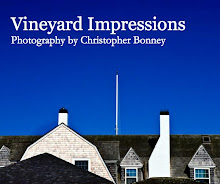
Parkers Blue Ash Tavern (No Iced Tea Served), 2010
“They have tickets to something every weekend. They act like they’re so rich.”
“I tell you, the world’s going to hell in a hand basket. You just can’t trust anyone any more. Even when you want to believe it, you can’t.”
“Just between you and me, I don’t think Frank knows what the hell he’s talking about.”
“If she didn’t stay with him, he’d have cataracts, too.”
“He’s wearing it all over his face!”
“I’ve done a remarkable job on this assignment, if I do say so myself.”
“Is it SWOT or SWAT? I swear, I think these marketing people are just making words up.”
"Where is Ronald Reagan when we need him?"
“When I got home he didn’t have a stitch of clothing on. I tell you, Miriam, I’m starting to get worried about him.”
“I need a new business partner. The one I have now is holding me back. People in Cincinnati aren’t very receptive to good idea men.”
“I don’t know anyone who clog dances any more. Used to be everyone knew how.”
“There’s been entrenchment on that team. Everybody knows it.”
“She called this morning and told me she has to have all the C42’s today. Today! Can you believe it? ALL the C42’s TODAY!”
“The gays, they’re very reasonable people if you just talk to them. My friend Myra’s son is one of them. He’s so polite. But do you think Harry’ll give him the time of day? Won’t even talk to the boy.”
“I think I’d do a lot better in Alabama.”
“I’m talking about this Martha Lou, not that Martha Lou. That Martha Lou can barely shuffle the cards when we play canasta.”
“I have a lot of great ideas. Maybe I’d do better over in Indiana.”
“If they don’t like coal, maybe they’d like to go without electricity for a while.”
“And then one morning he just didn’t wake up. That was all she wrote.”
“I could be great in Chicago. They’d get me there.”
“I don’t like anything looking scuzzy. I tell my husband, ‘If one of them’s worn looking, replace them all.’”
“I don’t feel it’s my job. But she sure does! So I guess it’s part of my job now.”
“If you ask me, those Tea Partiers ought to be locked in stocks out front of the courthouse where everyone can spit on them for what they’re doing.”
“Yeah, I think I’ll move to Chicago. I could be big in Chicago.”

































